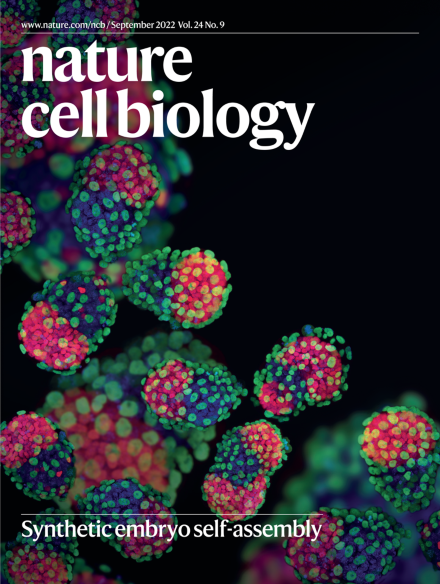A continuous totipotent-like cell-based embryo model recapitulates mouse embryogenesis from zygotic genome activation to gastrulation.
IF 19.1
1区 生物学
Q1 CELL BIOLOGY
引用次数: 0
Abstract
The development of stem-cell-derived models of mammalian embryogenesis has provided invaluable tools for investigating embryo development. However, constructing embryo models that can continuously recapitulate the developmental trajectory, from zygotic genome activation to gastrulation, remains challenging. Here we report the development of a chemical cocktail to induce totipotent-like cells with robust proliferative ability and leverage these cells to establish a stepwise protocol for generating a continuous embryo model. This model sequentially mimics mouse embryogenesis from embryonic day 1.5 to 7.5. It recapitulates key developmental milestones, including zygotic genome activation in 2-cell embryos, the diversification of embryonic and extraembryonic lineages from 4-cell to 64-cell stages, the formation of blastocysts and the subsequent development into post-implantation egg cylinders. Notably, these structures undergo gastrulation, as indicated by the formation of a primitive streak-like structure and the subsequent emergence of several early organogenesis hallmarks. Our study opens avenues for modelling mammalian embryogenesis in vitro.一个连续的全能样细胞胚胎模型概括了小鼠胚胎从合子基因组激活到原肠胚形成的过程。
哺乳动物胚胎发生的干细胞衍生模型的发展为研究胚胎发育提供了宝贵的工具。然而,构建能够持续再现从合子基因组激活到原肠胚形成的发育轨迹的胚胎模型仍然具有挑战性。在这里,我们报告了一种化学混合物的发展,以诱导具有强大增殖能力的全能样细胞,并利用这些细胞建立一个逐步产生连续胚胎模型的方案。该模型从胚胎第1.5天到第7.5天依次模拟小鼠胚胎发生。它概述了关键的发育里程碑,包括2细胞胚胎的合子基因组激活,胚胎和胚胎外谱系从4细胞到64细胞阶段的多样化,囊胚的形成以及随后的植入后卵柱的发育。值得注意的是,这些结构经历了原肠胚形成,如原始条纹状结构的形成和随后出现的几个早期器官发生标志所示。我们的研究为体外模拟哺乳动物胚胎发生开辟了道路。
本文章由计算机程序翻译,如有差异,请以英文原文为准。
求助全文
约1分钟内获得全文
求助全文
来源期刊

Nature Cell Biology
生物-细胞生物学
CiteScore
28.40
自引率
0.90%
发文量
219
审稿时长
3 months
期刊介绍:
Nature Cell Biology, a prestigious journal, upholds a commitment to publishing papers of the highest quality across all areas of cell biology, with a particular focus on elucidating mechanisms underlying fundamental cell biological processes. The journal's broad scope encompasses various areas of interest, including but not limited to:
-Autophagy
-Cancer biology
-Cell adhesion and migration
-Cell cycle and growth
-Cell death
-Chromatin and epigenetics
-Cytoskeletal dynamics
-Developmental biology
-DNA replication and repair
-Mechanisms of human disease
-Mechanobiology
-Membrane traffic and dynamics
-Metabolism
-Nuclear organization and dynamics
-Organelle biology
-Proteolysis and quality control
-RNA biology
-Signal transduction
-Stem cell biology
 求助内容:
求助内容: 应助结果提醒方式:
应助结果提醒方式:


